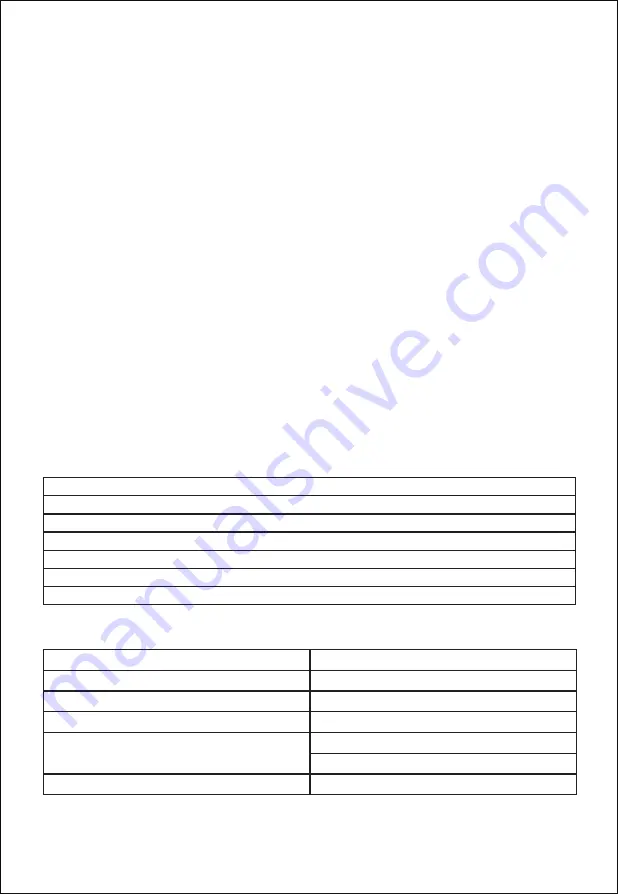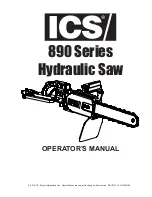
CORDLESS reciprocating SAW RES004
Introduction
Congratulations on the purchase of your new appliance . You have chosen a high-quality product
. The operating instructions are part of this product . They contain important information about
safety, usage and disposal . Before using the product, please familiarise yourself with all operating
and safety instructions . Use the product only as described and for the range of applications specified
. Please also pass these operating instructions on to any future owner .
Intended use
This appliance is designed for sawing, cutting to length and adapting wood, plastics, metal and
construction materials . The reciprocating saw is suitable for rough sawing work, straight and curved
cuts and cuts off surfaces flush . Heed the information concerning saw blades and practical advice
on sawing . Any other uses of or modifications to the machine are deemed to be improper usage and
may result in serious physical injury . The manufacturer accepts no responsibility for damage(s)
attributable to misuse . This appliance is not intended for commercial use.
Features
Package contents
Technical data
9.Battery charge level button
10.Battery display LED
11.Battery pack
12.Release button for battery pack
13.Locking lever for footplate
14.Red charge control LED
15.Green charge control LED
16.High-speed charger
1.Saw blade
2.Footplate
3.Quick-release chuck
4.Pendulum stroke switch
5.Ventilation slits
6.Safety lock-out
7.ON/OFF switch
8.Handle
1 cordless reciprocating saw
1 saw blade for wood
1 saw blade for metal
1 high-speed battery charger
1 battery pack
1 carrying case
1 set of operating instructions
Reciprocating saw
Rated voltage
Rated idle stroke speed
Stroke length
Max . cutting performance
Saw blade mounting
RES004
18 V---(DC)
n
0
0–3000 rpm
20 mm
Wood 100 mm
Metal 8 mm
1/2" (12 .7 mm)
Use only the following battery to operate the cordless tool:
Use only the following high-speed battery charger to charge the cordless tool:
Noise emission value:
Noise measurement value determined in accor- dance with EN 60745 The A-rated noise level of
the tool is typically:
Sound pressure level:LPA = 88 dB(A)
Uncertainty:K =3 dB
Sound power level: LWA = 99 dB(A)
Uncertainty:K =3 dB
Wear hearing protection!
Vibration values (vector total of three directions) determined in accordance with EN 60745:
Total vibration value:
Sawing chipboard: a
h,B
= 11 .4 m/s2
Uncertainty: K = 1 .5 m/s2
Sawing of timber beams: a
h,WB
= 9,6 m/s2
Uncertainty: K = 1 .5 m/s
2
NOTE
►The vibration level specified in these instruc- tions has been measured in accordance with a
standardised measuring procedure and can be used for equipment comparisons . The specified
vibration emission value can also be used to make an initial exposure estimate .
WARNING!
►
The vibration level varies in accordance with the use of the power tool and may be higher than the
value specified in these instructions in some cases . Regular use of the power tool in this way may
cause the user to underestimate the vibration . Try to keep the vibration loads as low as possible .
Measures to reduce the vibration load are, e .g . wearing gloves and limiting the working time . Where-
in all states of operation must be included (e .g . times when the power tool is switched off and times
where the power tool is switched on but running without load).
General Power Tool Safety Warnings
WARNING!
►Read all safety warnings and all instructions . Failure to follow the warnings and instructions may
result in electric shock, fire and/or serious injury .
Save all warnings and instructions for future reference.
The term "power tool" in the warnings refers to your mains-operated (corded) power tool or battery-
operated (cordless) power tool .
1.
a)
b)
c)
2.
a)
b)
c)
d)
e)
f)
3.
a)
b)
c)
d)
e)
f)
g)
4 .
a)
b)
c)
d)
e)
f)
g)
5.
a)
b)
c)
d)
6.
a)
Appliance-specific safety instructions for reciprocating saws
To avoid the risk of injury or fire as well as health risks:
■
■
Safety guidelines for battery chargers
■
■
WARNING!
■
Original accessories/auxiliary equipment
■
Information on saw blades
You can use any saw blade provided it is fitted with a suitable mount – 1/2" (12 .7 mm) universal shaft
. Saw blades optimised for your reciprocating saw are available from retail stores in different lengths
for various purposes.
NOTE
►
Wood saw blade:
Ideal for: sawing construction wood, chipboard, panels and plywood, and also plunge cuts .
Before use
Charging the battery pack (see fig . A)
CAUTION!
►
NOTE
►
♦
♦
♦
CAUTION!
♦
♦
♦
♦
Attaching/disconnecting the battery pack to/from the appliance
Inserting the battery pack:
♦
Removing the battery pack:
♦
Checking the battery charge level
♦
♦
Fitting/changing the saw blade
WARNING!
►Remove the battery before carrying out any work on the power tool (e.g. mainte- nance,
changing tools, etc.) as well as during the transport and storage of the power tool. Uninten
-
tional activation of the ON/OFF switch can result in injury .
♦
♦
CAUTION!
►The teeth of the saw blade must 1 point downwards!
♦
Adjusting the footplate
RISK OF INJURY!
►Always remove the plug from the power socket before working on the appliance .
♦
♦
♦
Adjusting the pendulum stroke
♦
Use
Switching on and off
Switching on:
♦
Switching off:
♦
Adjusting the rotational speed
Press the ON/OFF switch
7
lightly for a low speed . Increasing the pressure increases the speed.
NOTE
►The integrated motor brake ensures rapid stoppage .
Guiding the reciprocating blade safely
To adapt to the workpiece and for safe placement, the footplate
2
can be swivelled . It must always be
in contact with the workpiece when the appliance is running .
Practical advice on sawing
♦
♦
♦
♦
■
■
■
Sawing flush to edges:
Using flexible saw blades with a suitable cor- responding length, you can saw off protruding workpiec-
es such as pipes flush to the wall .
Proceed as follows:
1.
2.
3.
Plunge sawing:
CAUTION! RISK OF KICKBACK!
■Plunge cuts may only be made in soft materials (wood or similar) .
Proceed as follows:
1 .
2.
3.
Maintenance and cleaning
WARNING! RISK OF INJURY!
Always switch the appliance off and remove the battery before carrying out any work on the
appliance.
■
■
■
■
■
■
■
■
Service
WARNING!
►
►
Disposal
Defective or worn-out rechargeable batteries must be recycled according to Directive 2006/66/EC .
Take the battery pack and/or appliance to a nearby collection facility .
Please consult your local authorities regarding suitable disposal of worn out power tools/battery packs
- 03 -































